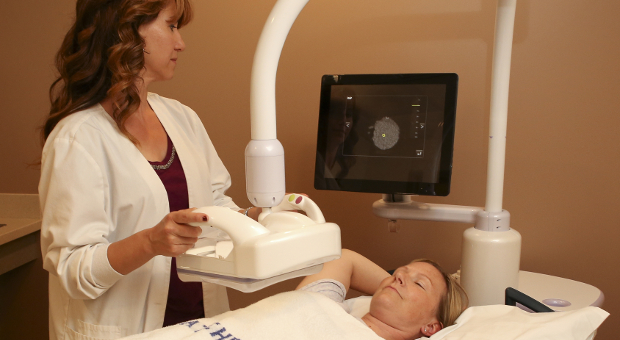The Medical Minute: How breast density can affect cancer screenings

When it comes to breast cancer screening, the density of your breasts affects how well a mammogram can detect cancerous tissues. That's why Pennsylvania and 20 other states have adopted laws requiring radiologists to include information about breast density in every woman's mammogram report.
Breast density is described by four categories – A, B, C, and D – according to the American College of Radiology. Woman who have a breast density of C (heterogeneously dense) or D (extremely dense) may want to inquire about screening methods besides mammography for early detection.
Dr. Susann Schetter, co-medical director of Penn State Breast Center, says only about 10 percent of the population has extremely fatty (A category) breasts and only about 10 percent have extremely dense (D category) breasts. Most women fall somewhere in the middle.
But breast density isn't the only factor in developing breast cancer, nor is it a certain predictor of risk. For instance, younger women tend to have denser breasts, yet it is older women – who typically have less dense breast tissue – who are more at a risk for developing cancer.
And while breast density is also affected by weight, Schetter says it's always better to have a lower body-mass index (BMI) and denser breasts than to have fatty breasts and be overweight or obese because obesity increases the risk for breast cancer as well as other health problems.
“There are other metabolic activities that are going on in breast tissue that contribute to its density, so it's not just glandular tissue,” she says. “We think the risk is actually highest for post-menopausal women with high breast density.”
About 10 years ago, the switch to digital mammography improved identification of cancer in dense breast tissue by 30 percent, but for some women, that's still not good enough.
A mammogram image shows areas of ‘darkness,' representing fatty tissue, as well as areas of ‘whiteness' that represent the tissue which is the functional part of the breast. “The more of that white that is present on the image, the more dense the breast,” Schetter says.
The problem, she says, is that cancerous tissues also show up white on a mammogram, so for women with high breast density, “it's harder for the radiologist to detect cancer because it's like looking for a snowball in a snowstorm.”
Schetter says medical professionals are studying other imaging methods to supplement mammography for those with high breast density so they can do a better job of detecting cancer at the earliest stages.
Women with the highest risk of breast cancer – with more than 20 percent lifetime risk – are eligible for MRI, but most women don't fall into that category. Those who have a moderately increased risk may want to consider whole-breast ultrasound, a technology that is now available at Penn State Hershey.
“It's easier to tolerate than mammography and it helps us to see inside the dense breast tissue in a different way,” Schetter says. “It's also nice because an ultrasound doesn't use radiation, yet it gives us an image from the skin to chest wall of the breast tissue so we can page through and look for abnormalities.”
When used in combination with mammography, the new technology is able to detect an additional two or three cancers in every 1,000 women screened. The current compromise is the possibility for false positive tests that may require a ‘second look' to determine normal breast tissue.
“So far, it has great promise,” Schetter says.
Schetter reminds women that doctors still recommend annual mammograms for women age 40 and older. Those who have a significant family history of breast cancer or other known risk factors and high breast density, which may put them at higher risk, should talk with their doctor about the best screening methods to supplement mammography.
For more information, visit the Penn State Breast Center website.
The Medical Minute is a weekly health news feature produced by Penn State Milton S. Hershey Medical Center. Articles feature the expertise of Penn State Hershey faculty physicians and staff, and are designed to offer timely, relevant health information of interest to a broad audience.
If you're having trouble accessing this content, or would like it in another format, please email Penn State Health Marketing & Communications.
